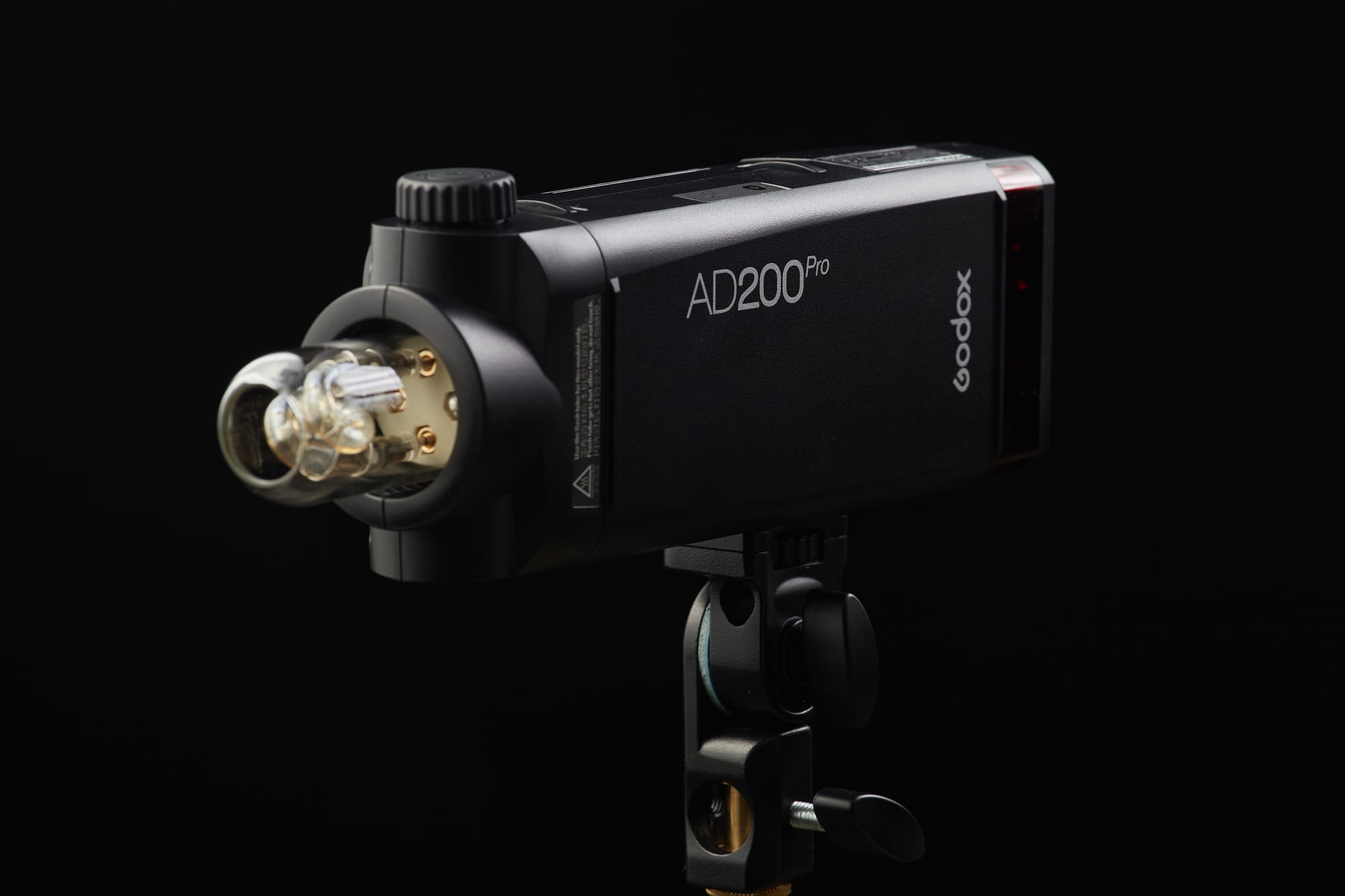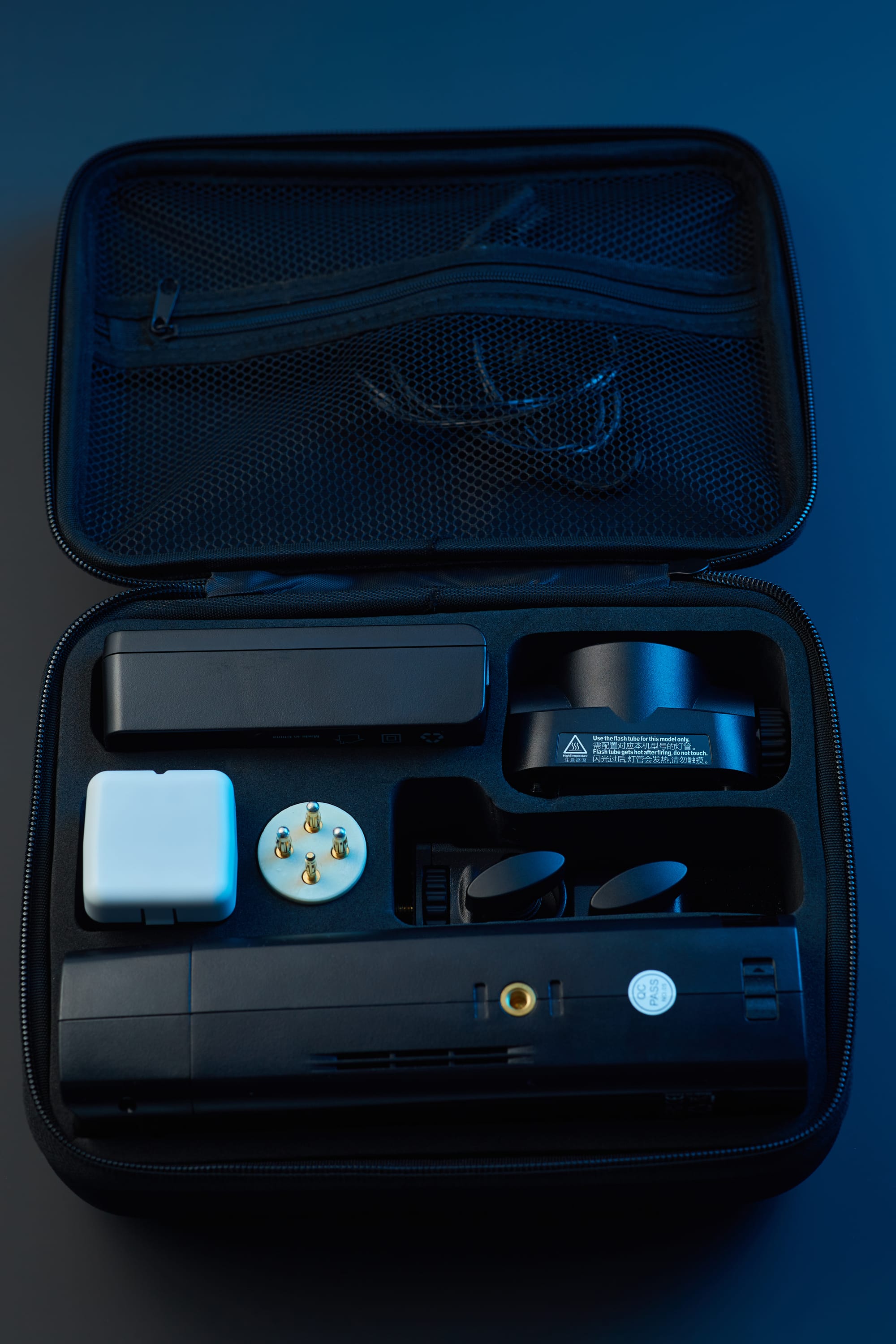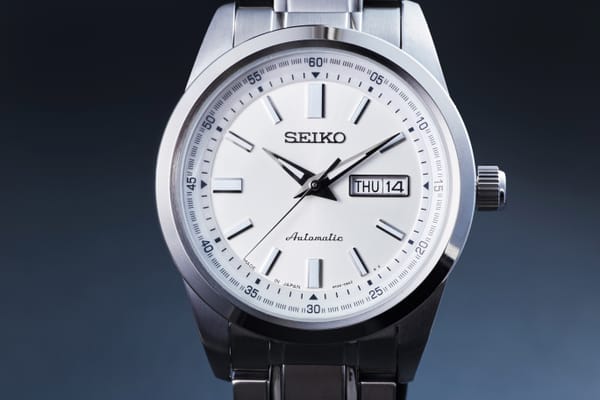A Review Of The Godox AD200Pro TTL Pocket Flash
Lately, I've been shooting all of my product photography with the Godox AD200 Pro. It's been much more enjoyable compared to using larger monolights paired with manual radio triggers.

Decaf Journal is reader-supported. When you buy links through our site, we may earn an affiliate commission.
An essential aspect of studio photography is the flash or strobe that is used to create light. Pictures made in a studio environment are reduced to their most simple elements such as the backdrop, subject, composition, and perhaps most importantly the quality of light. There's no golden hour sunlight, blurry backgrounds, or stunning natural landscapes to fall back on.
Therefore, the light source carries substantial weight into the success of a photographed produced in the studio. Speed, reliability, color consistency, powerful output, and versatility are often considered the most important things to consider when choosing a studio light.
That's why for years I was a devout fan of the Paul C Buff Einstein flash units. They were durable, consistent, and overall trouble free monolights that performed flawlessly. They're a completely manual flash without any automatic settings which suited me perfectly, as I prefer not to have any creative lighting decisions influenced by a computer. The only immediately apparent downside to the Einstein flashes is that they're not a great value for anyone living outside of the United States.
In any case, I sold them off a couple of years ago when I moved to Asia for several months and didn't want to be burdened by any extra weight. When I started looking at acquiring studio lights again, there was one brand that kept popping up over and over. And that is none other than Godox.

I had heard mostly good things about Godox lighting equipment, and was especially intrigued when I discovered the existence of the Godox AD200Pro. The Godox AD200Pro is barely larger than a standard speedlight, but far more powerful compared to the latter's modest 60 watt second on average power output.
I was seriously considering going back to my tried and true Einstein flash unit's, but I came to the realization that Godox has simply gotten too competitive to pass up. Especially at the friendly price point that these are going for, I purchased the Godox AD200Pro TTL Pocket Flash Kit with an open mind to see what what it could offer.
The Godox AD200Pro is a truly pocketable flash unit that includes two interchangeable flash heads, one being a speedlight head and the other being a bare bulb flash head. It features 200 watt seconds of power output which is impressive given it's small footprint, along with a brief 1.8 second recycle time at full power. This flash unit includes an optional TTL system for those who prefer convenience or work in quickly changing lighting situations such as a live event.
It also has a high speed sync mode up to 1/8000 second, and the excellent rechargeable lithium ion battery is rated for 500 flashes at full power. In other words, we're talking small, powerful, and fast. These are all very good things when it comes to off camera flash.

I highly value a good user interface, and luckily the Godox AD200Pro is mostly simple to operate and was fairly straightforward to add to my existing workflow. There are multiple mounting points on the flash unit so that you can easily mount it to a light stand in any orientation that you desire.
The menu system on the back of the flash is easy to get familiar with after a brief read through the manual. In terms of flash output control, you have a broad range starting at full power all the way down to 1/256 power in 1/10th stop increments. This allows you to really dial in your desired power output.
A standout feature of the Godox AD200Pro is that it comes with two interchangeable flash heads. You can absolutely use the standard flash head, but the bare bulb is what really sets this flash apart from the rest and puts it into the "serious creative tool" category. To make it even more versatile, Godox offers the Godox AD-S2 Standard Reflector for the bare bulb head as well which essentially turns this pocket flash into a full fledged professional studio light.
In terms of color output, I've definitely noticed that the color temperature of the Godox AD200Pro is more stable and generally nicer overall than the Godox SK400II-V monolights that I also own.

Now to discuss the feature that I didn't think I wanted or needed, but ended up making my life so much easier. The Godox AD200Pro has a built in radio trigger that seamlessly works with the Godox Xpro-C flash trigger. I had always stubbornly used fully manual Pocket Wizards for the last 15 years, but this integrated radio system is just too convenient. I've never once had the flash misfire on me.
More importantly, I love being able to easily change the power setting on the flash just by using the transmitter on the camera. Also, unlike Pocket Wizards the radio trigger on the Godox AD200Pro uses a 2.4G radio system which isn't region specific and works around the world. As someone who frequently straddles North America and East Asia, this simplifies everything!
As a quick side note, alongside the Godox AD200Pro and a couple of other manual speedlights, I've been using the Godox S2 flash bracket to mount the flashes to my lighting modifiers and it has been nothing short of an absolute game changer. It's trivial to set up and take down my portable studio setup now.
There's no more fiddling with hot shoe umbrella adapters which are generally a terribly clunky experience. It's a brilliant design that should've been thought of decades ago and this flash bracket has changed my studio photography workflow for the better.
Pros
- Tiny enough to fit into a camera bag. The perfect solution for travel and on location work.
- Much less of a burden to set up and takedown than traditional monolights.
- Substantially more powerful than a hot shoe flash. Powerful enough for use with a 60 inch octabank when used at close portrait or still life distances. I'm getting f11 at ISO 100 without any trouble.
- Nice carrying case is included and provides confidence inspiring protection.
Cons
- It is heavy given it's small footprint.
- The user interface is easy enough to navigate once you use it a couple of times, but I've used better menu systems. This is something that Godox could further improve upon in the future.
After several months of frequent use, I've had no issues with the Godox AD200Pro to speak of. Lately, I've been shooting all of my product photography with this flash unit in manual mode as the key light and a couple of hot shoe flashes as fill lights.
It's been much more enjoyable and liberating compared to using larger monolights that plug into the wall paired with manual radio triggers. The Godox AD200Pro is a far better value than Profoto or even Paul C Buff, and I'll be picking up another one shortly. It really is that good.





